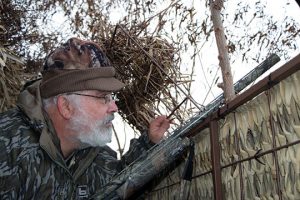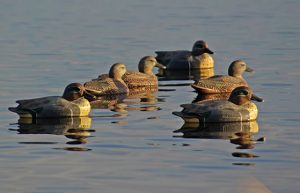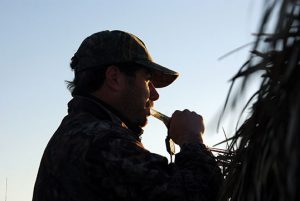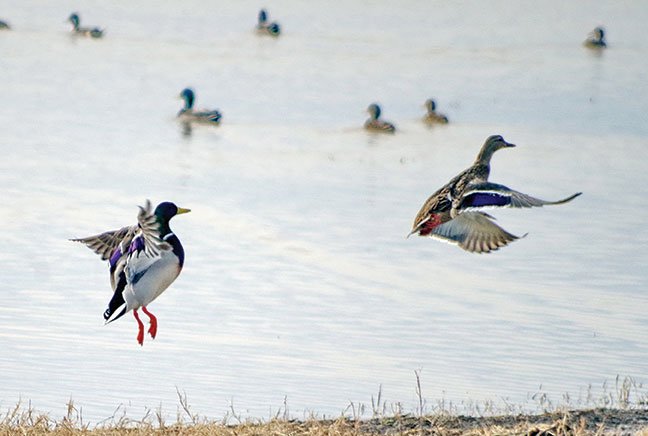By Keith “Catfish” Sutton
Duck season’s final weeks can be the best of times or worst of times for Mid-South hunters. On the good side, bird numbers on wintering grounds have peaked, and frigid weather means fewer hunters competing for prime spots. Unfortunately, the late weeks also bring icy temperatures that freeze still waters and lock ducks out of many areas. The birds are much warier, too, having survived a gauntlet of hunters during migration.
Not to worry, though. If you employ these late-season hunting tips from veteran waterfowlers, you’re sure to bag some quackers.
Stick With Open Waters, Heavy Shot
Jim Spencer of Calico Rock, Arkansas has been hunting ducks since Methuselah was a baby. More than 60 years of experience have given him in-depth knowledge of waterfowl’s seasonal behaviors.
“When late season arrives, surviving ducks are cagey,” he said. “Hunting pressure along their migration routes has given them PhDs in hunter avoidance. So, even though there are generally more ducks in a region late in the season than there were at the beginning, they’ll certainly be spookier and harder to hunt.

“Cold fronts can change that. Shallow water freezes quickly, and even one night of 25-degree weather will put many flooded rice fields, ponds and marshes out of commission. That’s when you should relocate to flooded timber, big-river backwaters with current or deep water in lakes. In these areas, water stays liquid and cold-weather ducks congregate.”
Spencer says another subtle variance overlooked by many hunters is that January ducks are more densely feathered than November ducks. “They take more killing,” he noted. “Add to that the aforementioned shyness after being shot at all the way down from Canada, and you get a scenario calling for heavier loads. I prefer size 2 or 3 steel shot and size 5 or 6 bismuth or tungsten shot for early-season hunting, but during the last two or three weeks, I switch to BBs or 1s in steel or 4s in bismuth and tungsten.” (NOTE: Check local regulations first. Some states ban larger shot sizes for waterfowl.)
Decoy Tricks

To fool sharp-eyed late-season birds, outdoor writer and duck-hunting enthusiast John Felsher of Semmes, Alabama says hunters should reach deeper into their decoy bag of tricks. He should know. He grew up in south Louisiana where duck hunting is almost a religion and shot his first Bayou State birds as a youngster carrying a single-shot .410.
“Thinking the more green the better, many Mid-South hunters launch massive mallard fleets into their ponds,” Felsher said. “But too many decoys can spook birds. Sportsmen pursuing divers in large lakes or bays need large spreads. But when pursuing puddlers like mallards and teal, less often means more as ducks become decoy shy and break into smaller groups. During late season, a few well-placed decoys in a remote pothole may offer more appealing temptations.”
Because so many hunters use mallard decoys, ducks equate bobbing green heads with shooters. “For that reason, hunters should vary the species and use more than one type of decoy,” he said.
“A few small teal might reassure spooked ducks. Even if birds cannot discern the paint job from heights or in low light, they can detect size differences between mallards and teal. Also, whitish decoys like pintails and canvasbacks create some flash that birds can see from long distances.”
Felsher also likes to place one or two heron or white egret decoys along a far shoreline to add color and serve as confidence builders. “Ducks get used to seeing herons and know they don’t like to hang around people with shotguns. A couple coots placed at the extreme range instill confidence, too, and can serve as shooting marks.”
No Ice, Less Calling
Greg Churan of Little Rock has 45 years of duck-hunting experience. He hunts every week of the season, usually at his family’s farm in northern Missouri or in the bottomlands of eastern Arkansas.

“I usually have good luck hunting late in the season,” he said, “but when I’m hunting shallow water in open wetlands and rice fields, I need to keep the water open to draw ducks in. To do that, I use a Honda 2000 generator to power a de-icing device made to prevent boat docks from freezing up. I camouflage the generator with FastGrass, then hang the de-icer in the water. Even in water just 6 inches deep, the de-icer keeps a pretty good hole open, and I can run the generator continuously while hunting. It’s quiet and won’t flare ducks, and it also adds duck-attracting motion to my decoys.”
Because mallard drakes are pairing up with hens during late season, Churan also scatters his decoys more, tossing a pair here and a pair there around the perimeter of the main block. “This really seems to help,” he says, “and I really cut back on the amount of calling I do, too, because ducks have gotten warier. I’ll use a chuckle now and then, but no highballs. I’ll typically cut my calling back 75 percent, and some days I won’t call at all. I just let my decoys do their work.”



